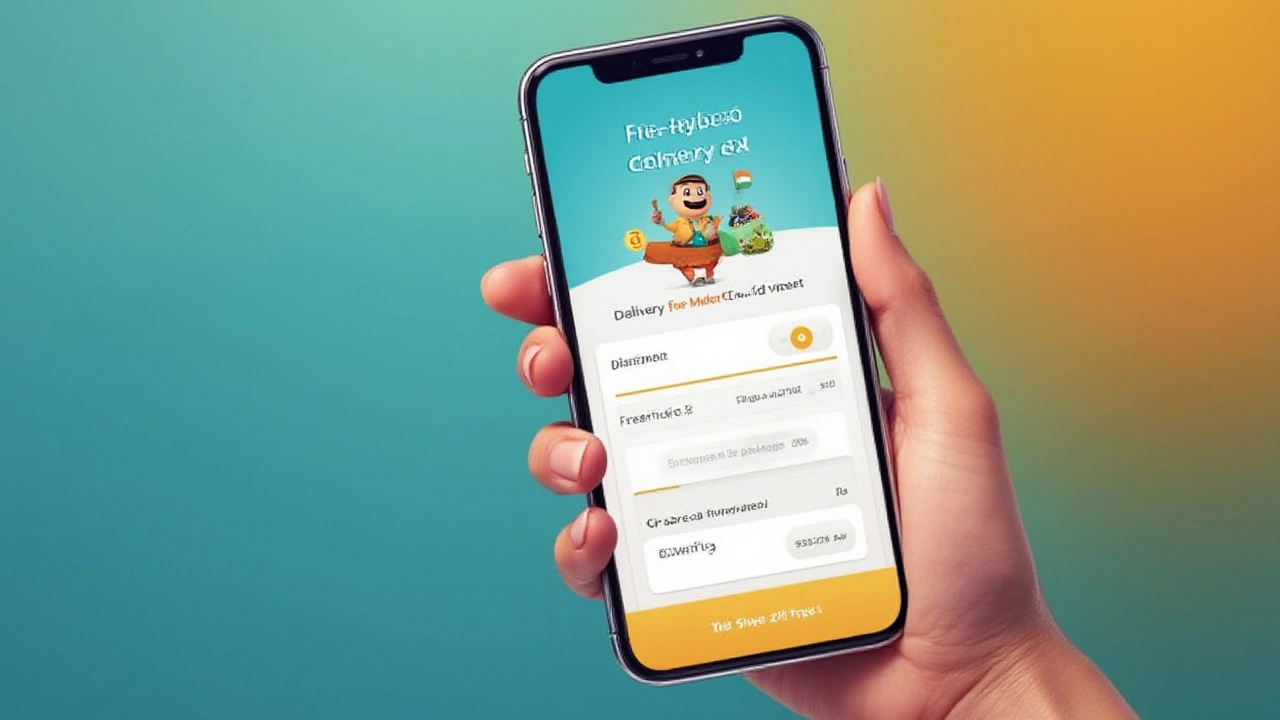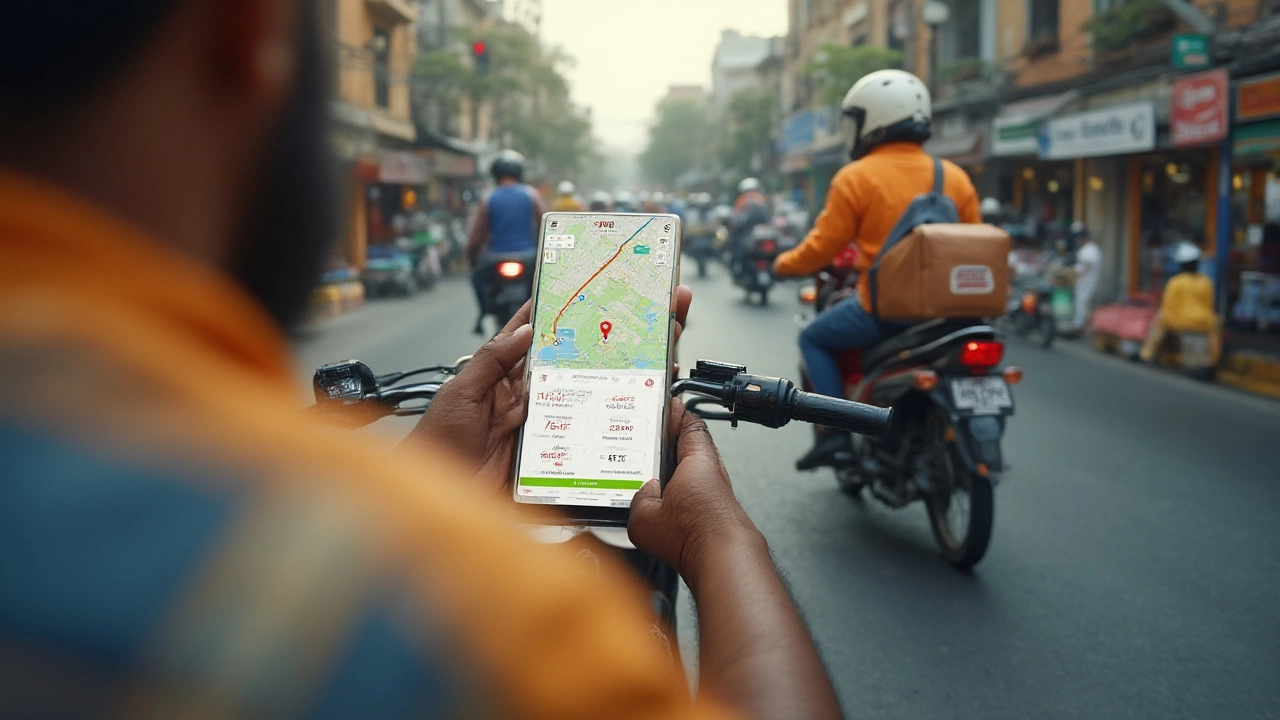Picture this: you just set up your online store, orders are coming in, and now you face the question every business owner dreads—how do you set the right delivery fee? It's one of those details that can annoy customers if you get it wrong or drain your profits if you're not careful. Calculating the perfect delivery fee isn't about throwing a dart at the wall or copying your competitor. It’s a game of numbers, logistics, and understanding exactly what drives those charges up or down.
What Goes Into a Delivery Fee?
Every delivery charge isn't just plucked out of thin air. It's a mash-up of factors that combine behind the scenes. First off, there's delivery fee calculation—and it's all about more than miles driven. Shipping providers look at distance, sure, but also at package weight, size, type of delivery service, speed, and even the little quirks of the destination, like whether it’s a city apartment or a village toss-up halfway up a mountain. The package's dimensions? Yep, they can change the price entirely. Even a tiny box that weighs almost nothing can cost more if it hogs space in a van.
Ever noticed how sending something same-day is usually pricier? That's all about timing. Urgency means extra miles, longer driver hours, and often, a dedicated vehicle zipping straight to the customer. There's an entire science behind this—companies run software that calculates routes, gas usage, tolls, and even monitors traffic congestion in real time. Urban deliveries, especially with the rise of services like Uber Eats or Amazon Prime Now, come with their own price tags, because stop-and-go city traffic or waiting for a customer to answer the door takes time (and time is, bluntly, money).
But that's not the end of the story. There are hidden layers, like insurance. Carriers have to factor in what happens if a package goes missing or gets damaged. This is why delivering a rare record player costs more to insure than tossing over a t-shirt. Just for kicks, toss in things like fuel surcharges—which rise and fall with oil prices—plus overhead like driver salaries, warehouse rent, and even the cost of those branded boxes. And here's a spicy fact: last-mile delivery (the trip from the local depot to your front door) can eat up over 50% of the total shipping cost, especially when you want that package ASAP. This last-mile puzzle is so expensive that companies spend billions every year tweaking it for maximum efficiency.
One last thing, and it’s easy to overlook: delivery reliability. More reliable services build the risk of refunds and re-deliveries into their fees. They know that a missed delivery isn’t just annoying—it means more time and more costs, which have to get covered somehow. If you offer customers tracking, SMS updates, or the promise that ‘if it’s late, it’s free,’ expect those bells and whistles to show up on your invoice, too.

Steps and Methods to Calculate Delivery Fees
Let’s break it down with some practical advice. There isn’t one magic formula, but you can follow a sensible process to get it right. Start by laying out your known costs. Write down the fixed costs first: vehicle maintenance, driver salary, insurance, warehouse rent. Then move to the variables: package weight and dimensions, delivery distance, urgency, and packaging type.
Most logistics pros use either flat rates or custom rates for different zones. Flat rates work well when most of your customers live nearby, but they can kill your margins if you get an oddball order from a place miles away. Zones are smart—you split your territory into sections, and price each one using data on local delivery times and costs. It’s how national couriers like FedEx and DHL set their fees. You can use their zones as rough benchmarks to start.
Now, let’s get into the numbers. For distance, plug addresses into Google Maps or delivery software to get mileage. Multiply by your per-mile vehicle running cost (think gas, maintenance, insurance per mile). Weight and size need a scale and tape measure, and for international orders, you’ll check carrier guidelines for volumetric weight, which is length × width × height ÷ some rate—usually 5000 for kilograms. If you’re shipping a six-foot teddy bear, this kicks in big time!
Speed is a deal breaker. If the customer wants delivery by tomorrow, they pay the premium—not just for the faster car, but for potential overtime and holding back a van just for their package. That cost needs to be in your calculations. Software like ShipStation or Easyship lets you plug in all these factors and spits out price estimates, and even suggests the cheapest and fastest courier options. Don’t sleep on these tools. Some of the savviest small shops out there run circles around big stores by letting software do the grunt work.
- Include packing costs for boxes, tape, and protection. Custom-sized boxes for fragile items cost extra (and often pay for themselves in fewer damages).
- Don’t forget surcharges for delivery to remote areas, or access fees if the driver needs to climb twelve flights of stairs, or wait in line at a big city apartment block. Real world tip: always check your provider's 'additional fees' sheet—some charge extra if there’s no elevator!
- If you want to keep it ultra-clear for your customers, use a delivery fee calculator on your website. Shopify, WooCommerce, and a bunch of ecommerce tools have plugins. These not only show the fee before checkout but let you build in slight margins for peace of mind.
Want to get fancy? Offer free shipping over a certain order value, then work that average delivery fee into your product prices (works wonders to nudge up per-order spend). Keep your eyes open for seasonal fluctuations, too. Delivery companies raise rates during busy periods—like Christmas and Black Friday—so adjust your settings, or risk shipping at a loss.
Remember to audit your actual vs. predicted costs each month. It’s super easy to drift into the habit of undercharging, especially as fuel or labor prices change. Tweak, compare, and don’t be afraid to revisit your structure. Delivery isn't something you fix once and forget. It’s a moving target that demands regular check-ins if you want to keep profits healthy and customers happy.

Tips and Tricks for Smarter Delivery Fee Strategies
Ready to take things next level? It's not just about putting a number on the checkout page—it's how you explain, test, and tweak your fee structure that separates the smart operators from the rest. Most customers don’t mind reasonable delivery fees; what irks them is that sudden sticker shock at the end. That’s why transparency is gold. Show the delivery fee as soon as you can, ideally right in the cart, not as a nasty surprise a second before they pay.
A cool statistic: when ASOS started showing shipping fees upfront instead of hiding them until the final step, their cart abandonment rate dropped by nearly 15%. So, honesty pays, literally. Plus, use plain language to explain your calculation: ‘Delivery fee based on distance and weight.’ The less mysterious it feels, the fewer complaints you’ll field.
It pays to give choices, too. Some people want it cheap, others want it fast. Show both—and let the customer choose. Studies from Shopify show that adding a slower, cheaper shipping option reduces abandoned carts and support emails, because customers love options. Just make sure your profit margins still work with the low-cost lanes.
If you can batch deliveries together (say, all orders in a certain postcode on Friday mornings), you’ll slash per-package costs. This works better in big cities, but even in rural areas, announcing ‘delivery days’ lets you pool shipping. Some grocery stores use this for regular refrigerated delivery routes, saving money for you and the customer.
Keep an eye on your competitors—but don’t play copycat. If they undercharge, they might be running at a loss to attract new business. You’ll find, once the shiny offers end, that many raise rates to survive. Instead, use their pricing to shape your communication: ‘Here’s why our delivery is faster/safer/more reliable, and here’s how our fees stack up.’ Sometimes, a higher but fairer fee, clearly explained, wins more trust—and loyalty—than the lowest number.
Don’t forget insurance, especially if you ship high-value goods. Offer customers an option to add insurance at checkout, and if it’s affordable, more than a third will say yes. It’s a win-win: you offload liability and make your customer feel safer.
Let’s not ignore automation. Automate your calculations wherever you can. Using software cuts mistakes, keeps up with changes in fuel or wage costs, and lets you spit out exact fees at scale. Modern delivery businesses rarely set rates by hand anymore. This frees you up to focus on marketing, product, and service.
Here’s a final pro move: test, test, test. Run two checkout flows—one with transparent delivery fee breakdown, one with a simple flat fee. Watch which gets better conversions or fewer customer emails. Use analytics and feedback forms to tweak what isn’t working. Every percentage drop in abandoned carts is money back in your pocket.
Setting delivery fees isn’t glamorous, but it’s the backbone of profitable ecommerce. Get this right, and you’re not just covering costs—you’re building trust, loyalty, and a business that can survive the next crazy spike in oil prices or holiday rush. Take the time, use the tools, and don’t be afraid to tweak your playbook month by month. Your bottom line—and your customers—will thank you.





